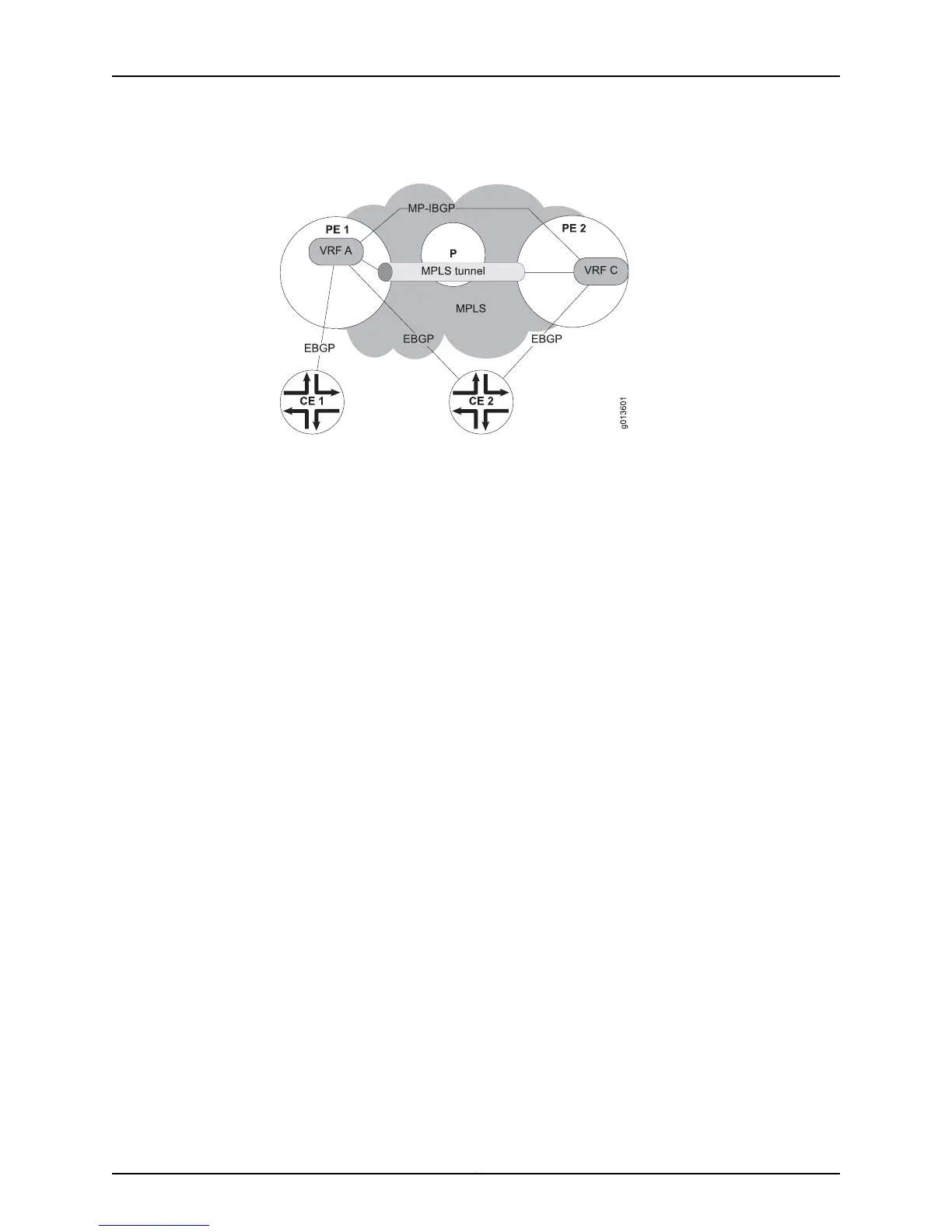Figure 94: BGP/MPLS VPN EIBGP Example
VRF A has two paths to get to CE 2: the IBGP path through the MPLS network, and the
EBGP path by means of regular IP.
To support BGP/MPLS ECMP, PE 1 is configured with the maximum-paths eibgp
command in the IPv4 unicast VRF A address family. Doing this allows both the EBGP
paths from CE 2 and the IBGP paths from PE 2 to be selected as multipaths in the VRF
A routing information base (RIB) for use in load balancing.
Traffic taking the various routes from CE 1 to CE 2 is treated as follows:
• Traffic from CE 1 to CE 2 that takes the EBGP route from PE 1 is forwarded as IP packets.
• Traffic from CE 1 to CE 2 that takes the IBGP route from PE 1 is forwarded as
MPLS-encapsulated packets. PE 2 receives the MPLS-encapsulated traffic from PE 1,
removes the encapsulation, and then forwards the traffic as IP packets by means of
the EBGP route to CE 2.
maximum-paths
• Use to enable ECMP support for BGP/MPLS VPNs.
• Specify a value in the range 1–16; the default value is 1. The value indicates the maximum
number of equal-cost multipaths for VPN routes.
• This command takes effect immediately; it does not bounce the session.
• For BGP/MPLS support, you must specify the maximum number of equal-cost
multipaths in the context of a VRF IPv4 unicast or IPv6 unicast address family.
• This command is not supported for the VPNv4 or VPNv6 address families.
• The maximum-paths eibgp command cannot be used if the router is currently
configured with the maximum-paths or maximum-paths ibgp command.
• Example
host1(config)#router bgp 100
host1(config-router)#address-family ipv4 vrf vrfA
host1(config-router-af)#maximum-paths eibgp 6
443Copyright © 2010, Juniper Networks, Inc.
Chapter 6: Configuring BGP-MPLS Applications

